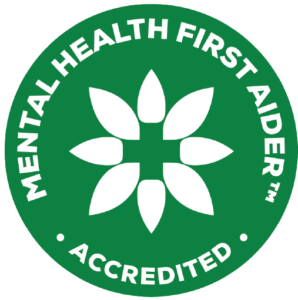
What is pain?
The International Association for the Study of Pain (IASP) defines pain as an unpleasant sensory and emotional experience associated with actual or potential tissue damage.
A lot of people see pain as just a physical sensation, however, it is influenced by attitudes, beliefs, personality, and social factors which also play a role. Regardless of the factors that affect how you feel pain, pain can severely affect emotional and mental wellbeing.
Acute and chronic pain are two main categories of pain (besides cancer pain). Acute pain being a pain which occurs following surgery, trauma, or other conditions. It normally lasts a short period and may heal over time as your body improves.
On the other hand, chronic pain lasts beyond the time expected for healing. It can exist without a clear reason and can also be a disease.
When you injure yourself (acute), the body will establish a protective response to limit movement and initially tense up. This is to protect the body and limit further injury, however, if the pain persists, this could be potentially unhelpful.
Movement can help pain! Here is how:
- Keeps you active and capable of doing what you want to do
- Reassures you that some pain with movement is OK – that not all pain is harmful
- Movement helps with pain relief by accessing the body’s adaptation mechanisms.
- Reduces stress, improves mood and mental awareness.
- Assists in establishing a mind-muscle connection and build’s bodily awareness.
What if you feel pain during movement?
- Your beliefs can influence what you believe about the pain you feel. (Pain is diverted via your nervous system; therefore, certain movements are okay to do without damaging the body). If you have helpful beliefs (i.e. movement is not causing damage and it is safe to move) then you are less likely to experience persistent pain.
- An example of this is back pain and the deadlift. When deadlifting the spine is in an erect and isometric position during the lift. With good form, practice and consistency, there will be improved strength in your posterior chain and therefore will aid in the recovery of pain.
- Fear of pain or of doing harm when exercising can stop you from moving. You may interpret pain during movement as damaging. Some pain is normal when recovering and should not be mistaken for damage. The fear of moving may slow down your recovery as you will be tensing up more often, not allowing you body to work within its ranges of motion.
Exercise choices
An exercise plan should include categorised prescription.
- Cardiorespiratory exercise
- Strength and conditioning
- Mobility and stretching
- Balance and agility
If you would like to learn more about pain management, exercise selection and how movement can assist in pain relief. Call or message the Livewell team and we can assist you with our extensive exercise knowledge.
Yours in good health,
Coach Allan




